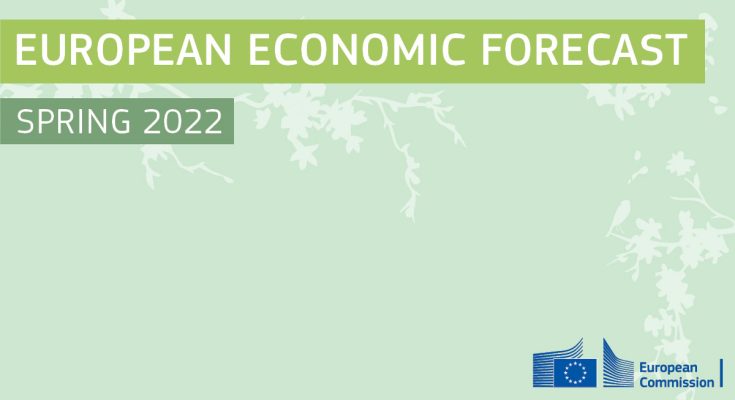The European Commission has published its new economic forecast for the EU. The hopes of economic recovery after the pandemic, which lasted for about two years, were unfortunately interrupted due to the Russian invasion of Ukraine. The invasion of Ukraine not only causes countless suffering and destruction and places a heavy burden on the European economy. The EU ranks first among the developed countries that have been hit the hardest economically by the war because it is geographically very close to Russia and Ukraine, dependent on fossil fuels imported from Russia, and integrated with both Russia and Ukraine in global supply chains.
All these difficulties, first of all, negatively affect growth. GDP growth in the EU is expected to decline from 4.0% to 2.7% in 2022 and 2.3% in 2023. The biggest blow to EU economies comes from high energy prices. The outlook in the EU is now lower growth and higher inflation, especially for 2022. Given the falling unemployment rate, it’s early to talk literally about stagflation, but further increases in import prices could strengthen the stagflationary forces unleashed by the war.
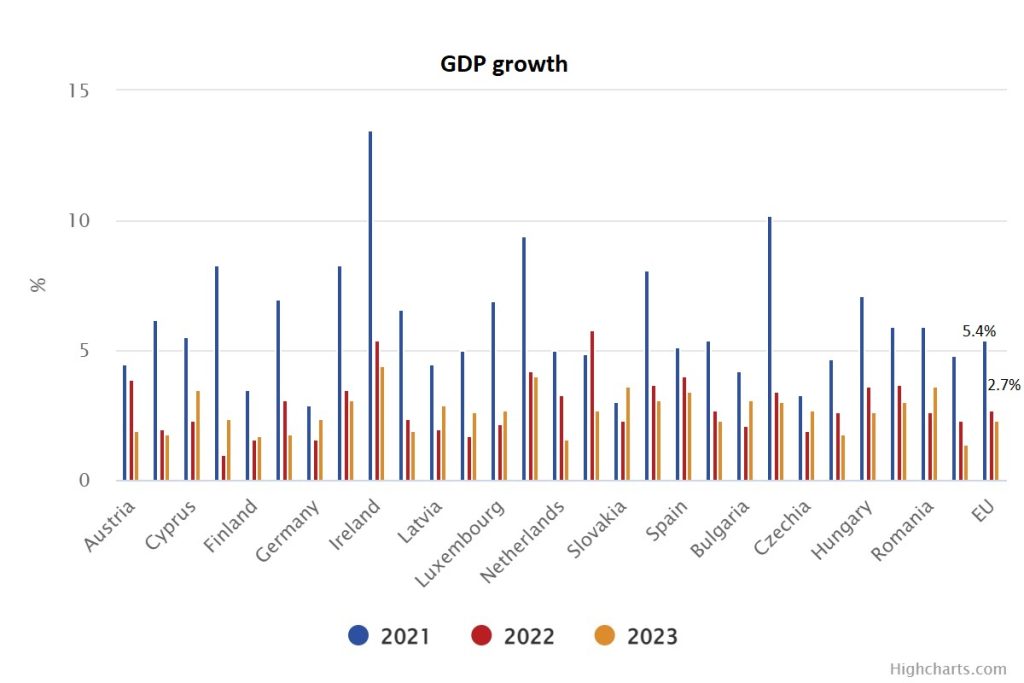
One of the few good indicators in this bleak picture is government deficits. The overall government deficit in the EU, which was 4.7% of GDP in 2021, is expected to rise to 3.6% of GDP in 2022 as temporary measures in response to COVID-19 continue to resolve and cyclical components of economic expansion improve. It is expected to fall too. With the continuation of this performance, the budget deficits to GDP ratio is expected to decline to 85% in 2023, as before the pandemic.
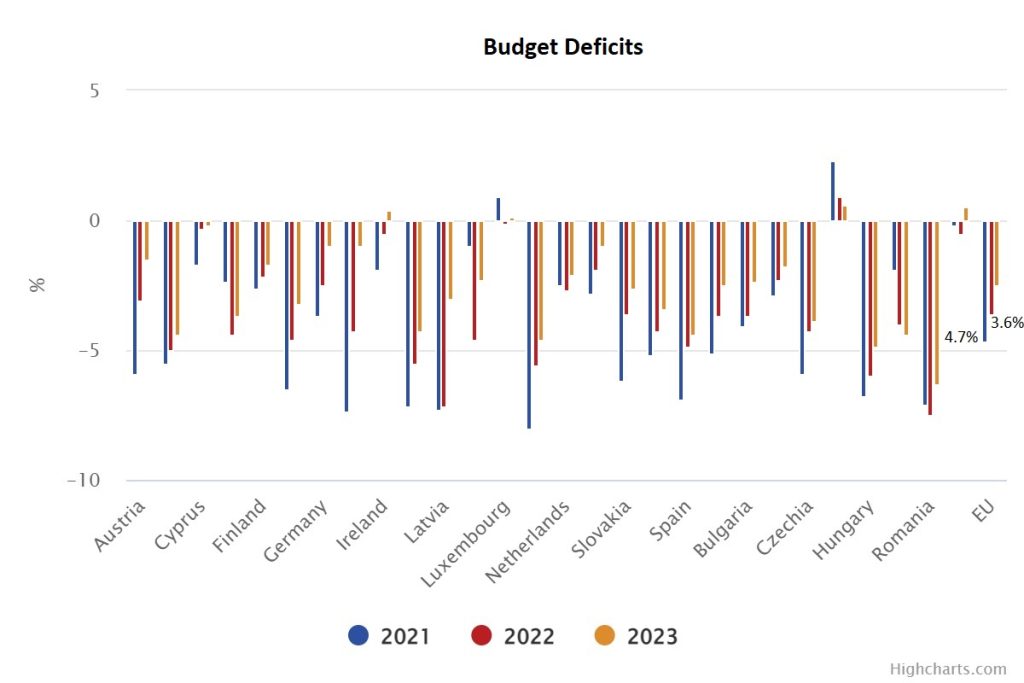
Increasing energy, food, and transportation prices due to the war caused inflationary pressures in the EU as well as in the rest of the world. In 2022, average inflation across the EU is expected to reach a record high of 6.8%, and in 2023 it is expected to decline again and stabilize at 3.2%.
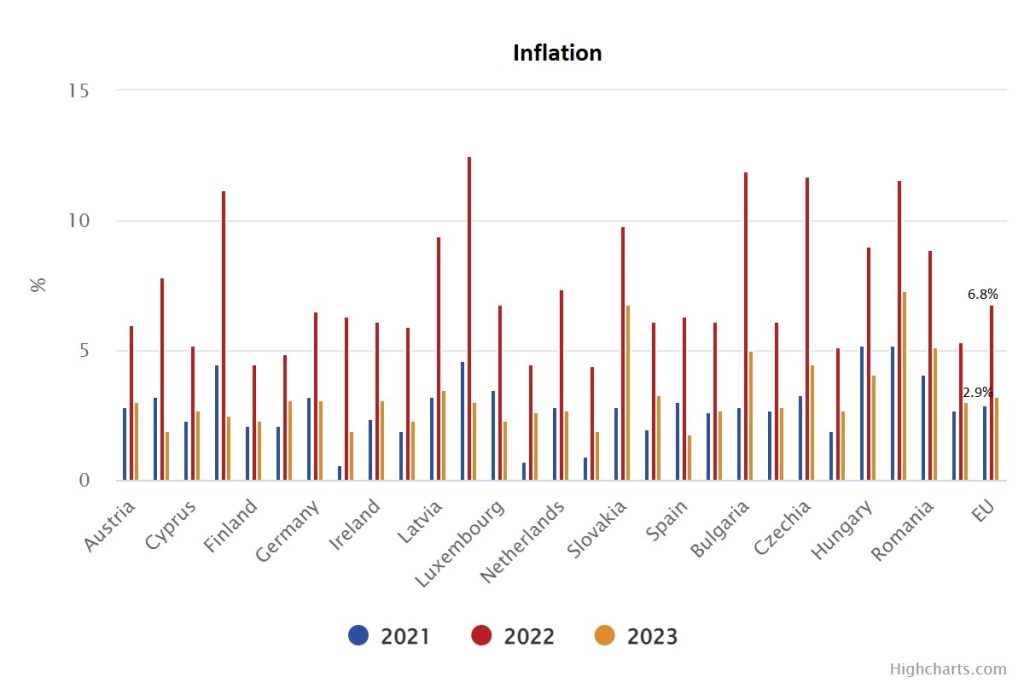
Another good news for the EU economy concerns unemployment rates. Across the EU, more than 5.2 million jobs were created last year and attracted around 3.5 million more people to the labor market. Unemployment rates in the EU are expected to fall to 6.7% this year and to 6.5% in 2023. Unfortunately, the improvement in the unemployment rate is not in question in real wages due to the fact that the increase in wages is below the inflation rate.
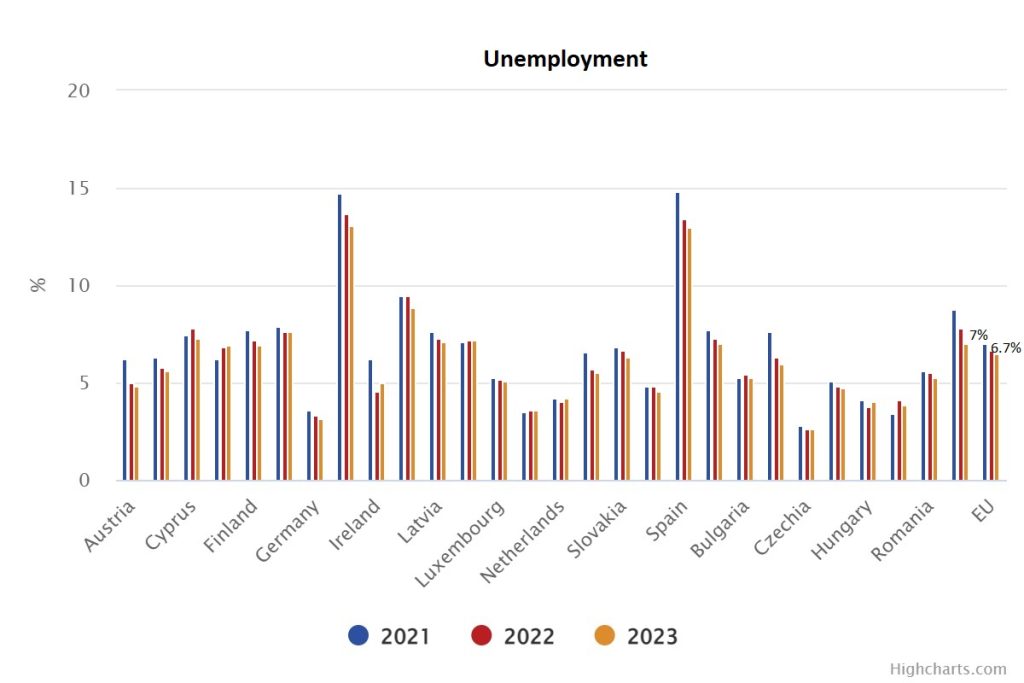
In summary, the expectation of economic recovery that started after the pandemic, unfortunately, seems to last longer than expected with the invasion of Ukraine by Russia. Although there is promising news such as the reduction of budget deficits and unemployment in all this dark picture,
In particular, the uncertainty caused by Russia’s persistent aggressive attitude, the unprecedented nature and extent of the shocks initiated by the War, and the associated rising energy, commodity, and transportation costs make the risks difficult to predict. In this uncertain environment, the best measures are to continue to reduce government deficits, create high-value-added jobs and reduce dependency on Russia.

